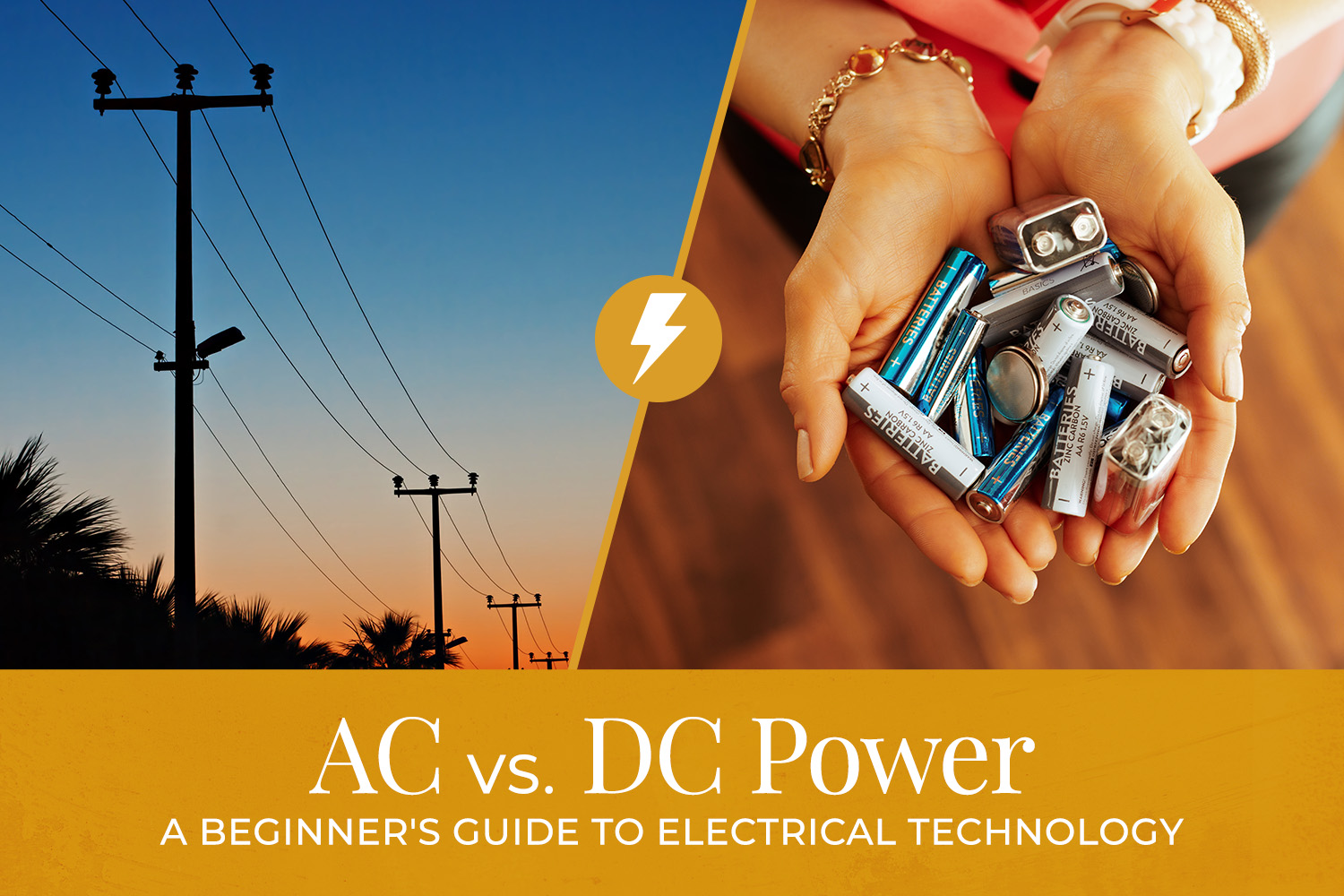AC vs. DC Power: A Beginner’s Guide
by
Electricity is the lifeblood of our modern world, and at the heart of this electrifying landscape are two fundamental forms of electrical power: Alternating Current (AC) and Direct Current (DC). Understanding these power sources is a crucial starting point for anyone venturing into electrical technology. Let’s explore the key differences between AC vs. DC power and their applications in the field.
AC Power: The Ebb and Flow
Alternating Current, commonly known as AC, is the type of electrical power that flows back and forth in cycles. The current alternates direction, changing from positive to negative and back again, at a specific frequency, typically 60 Hz in the United States. AC power is the standard for electrical distribution in homes and businesses.
AC has a unique advantage when it comes to long-distance transmission. It can be easily transformed into higher or lower voltages, reducing energy loss during transport. This is why you find AC power lines stretching across vast distances, supplying electricity to cities and towns.
Understanding AC power is essential, as it forms the basis for residential and commercial electrical systems, including lighting, appliances, and HVAC systems.
DC Power: The Steady Stream
Direct Current, or DC, is characterized by a continuous, unidirectional flow of electrical charge. It doesn’t change direction like AC; it flows consistently from the positive to the negative terminal. While not as prevalent in everyday electrical systems, DC has its unique applications.
For example, batteries, like those found in laptops and smartphones, provide DC power. In many electronic devices, including computers and televisions, DC power is converted from AC to power internal components.
DC power is in various applications, particularly in electronics, automotive systems, and renewable energy sources like solar panels and wind turbines.
AC vs. DC: Applications in Electrical Technology
The choice between AC and DC in electrical technology depends on the specific requirements of a system. Here are some key applications for each:
- AC Power Applications:
- Residential and commercial electrical systems
- Power distribution grids
- Electric motors in appliances and machinery
- Heating and cooling systems
- DC Power Applications:
- Battery-powered devices (laptops, smartphones, flashlights)
- Automotive systems (electric vehicles, hybrid vehicles)
- Electronics and computer systems
- Renewable energy sources (solar panels, wind turbines)
Start Your Career at Florida Academy
In the dynamic field of electrical technology, grasping the fundamentals of AC and DC power is the first step towards a career in the electrical industry. These two forms of electrical power have distinct applications that an electrical technician will need to be proficient in. If you’re ready to start your career in the electrical industry, apply to our Electrical Technology program today. By combining experienced classroom instruction with hands-on training in a professional workshop, we prepare students for new careers in the field. Apply now, visit our website to learn more.

